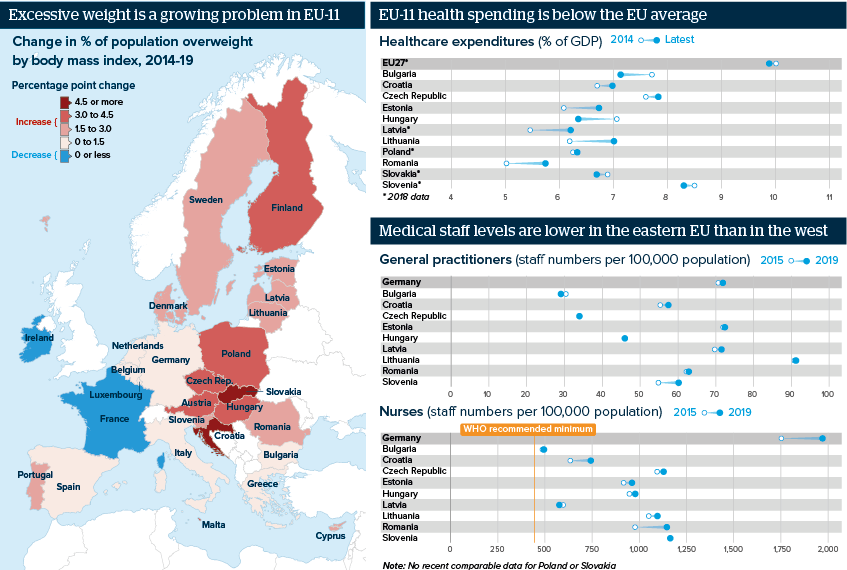Problems of obesity will spread in the EU’s east
EU member states in the east are failing to tackle the growing problem of populations defined as overweight
Source: Eurostat
Outlook
All eastern EU member states (EU-11) exceed the EU average for the population percentage defined by the body mass index as overweight. In seven, that proportion increased by 2.5 percentage points (pp) or more between 2015 and 2019. Croatia leads with 8pp, according to Eurostat.
Such increases suggest the situation will not improve soon. There is little likelihood that resources will be diverted to change the traditional approach to treating the sick in hospital, rather than prevention or lifestyle education. Heavy smoking and high alcohol consumption, connected to obesity, are still acceptable in Central-Eastern Europe, especially among males.
Impacts
- The EU-11 will suffer from the diseases of prosperity, due to such factors as sedentary lifestyles and convenience food.
- The need to deal with the continuing effects of COVID-19 will compete for the limited budgetary resources and staff available.
- An indicator for the future is rising obesity among children, who prefer fast food to the Mediterranean diet and spend much time online.
See also
- Polish government will negotiate with medical workers - Sep 13, 2021
- Romanian government’s health spending will fall short - Feb 26, 2021
- Rise in Polish health spending could be more ambitious - Dec 30, 2020
- Education could be an answer to Europeans’ weight gain - Dec 12, 2017
- More graphic analysis
